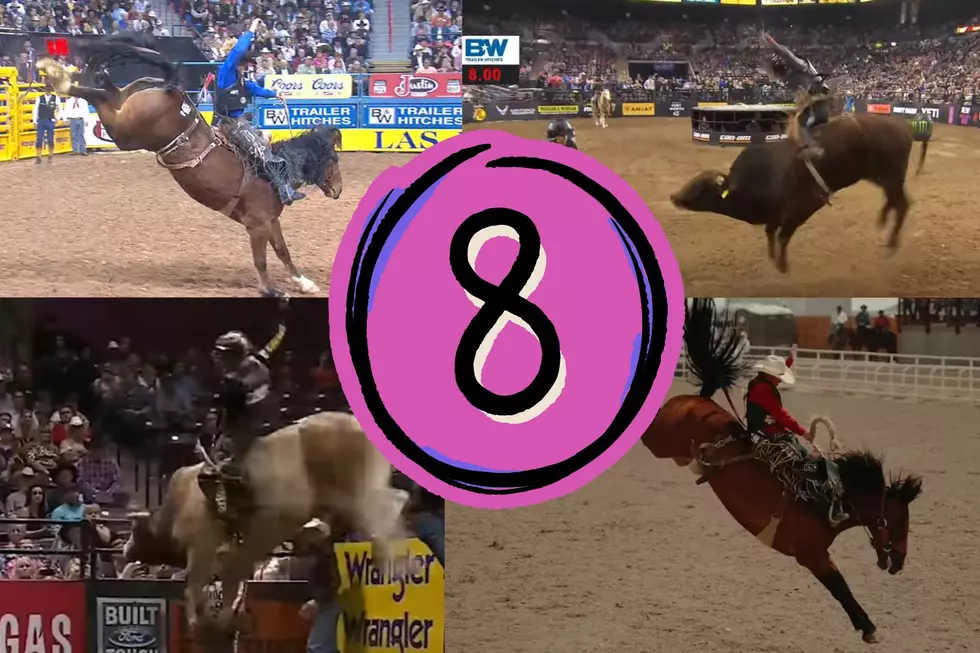
Why Is 8 Seconds Important In Wyoming’s Official Sport?
It's known as the most dangerous eight seconds in sports.
Eight Seconds has inspired movies, songs, books, clothing, family outings, and the rodeo lifestyle. It's impressive how much rides on such a small amount of time, literally.
It takes less than ten seconds from the gate opening until the bull or bronc ride is officially completed. I've never been strapped to a 2,000-pound bull or a bucking bronc, and I can only imagine the adrenaline, stress, pressure, and nerves a rider experiences for that short time. It takes a special kind of person to voluntarily climb on the back of an animal whose job is to get that person off their back in a fraction of a minute.
A career can built or broken in under 1/6th of a minute.
Many haven't made two seconds, let alone eight, which shows how intense these riders are and their dedication to the sport.
My question is, who chose eight seconds as the perfect time? Why eight and not ten or twelve? You may think that's an easy question to answer, and you may feel that it's just always been eight seconds.
When rodeo began, cowboys would ride the animal as long as possible. As rodeo became more of a sport than a pastime, riding events became timed. In the 1920s, men were required to stay on the bucking animal for at least ten seconds; in women's events, they were required to stay on for eight seconds. As the rodeo industry took off, money and the health of animals and riders became concerns, and the time changed from ten to eight seconds.
According to reports, eight seconds is perfect for the rider and animal to show off their talents. Research has shown that a bucking animal loses its adrenaline and gets tired. The safety of the animal and the rider is a significant concern.
The animals involved in the rodeo are cared for and treated humanely. Many rules ensure the animals are happy, healthy, and well-cared for. The American Veterinary Medical Association has research that says significantly fewer rodeo animals get injured.
Sites are required to have equipment ready to safely remove an injured animal from the arena. And injuries, at least to the animals, are relatively rare. Many cowboys make the weekly injury list, but an on-site survey of 21 PRCA rodeos found only 15 animals injured in 26,584 performances, a 0.00041 percent rate.
The Real History of Wyoming's Famous Bucking Horse "Steamboat"
Gallery Credit: University of Wyoming. American Heritage Center
